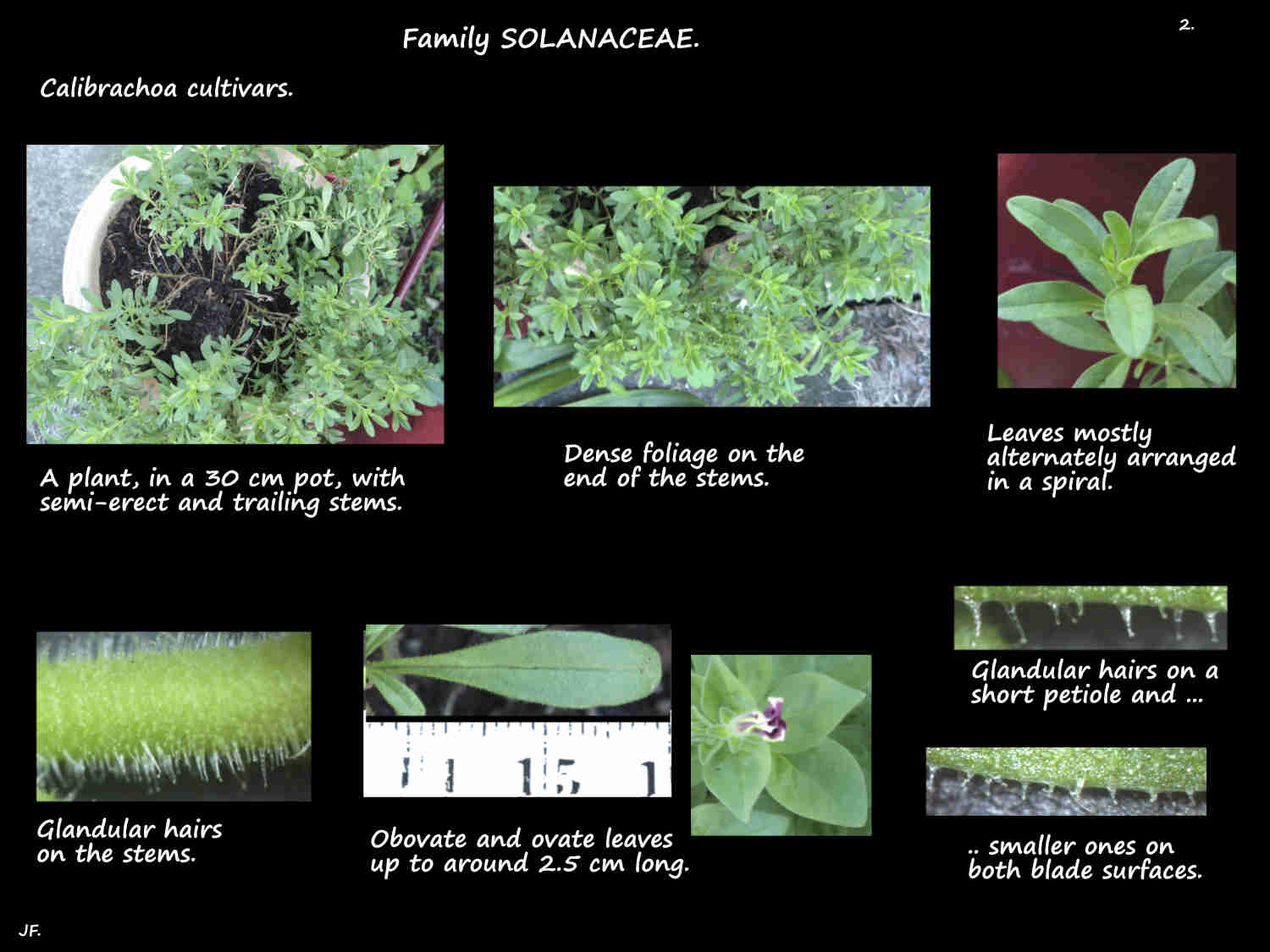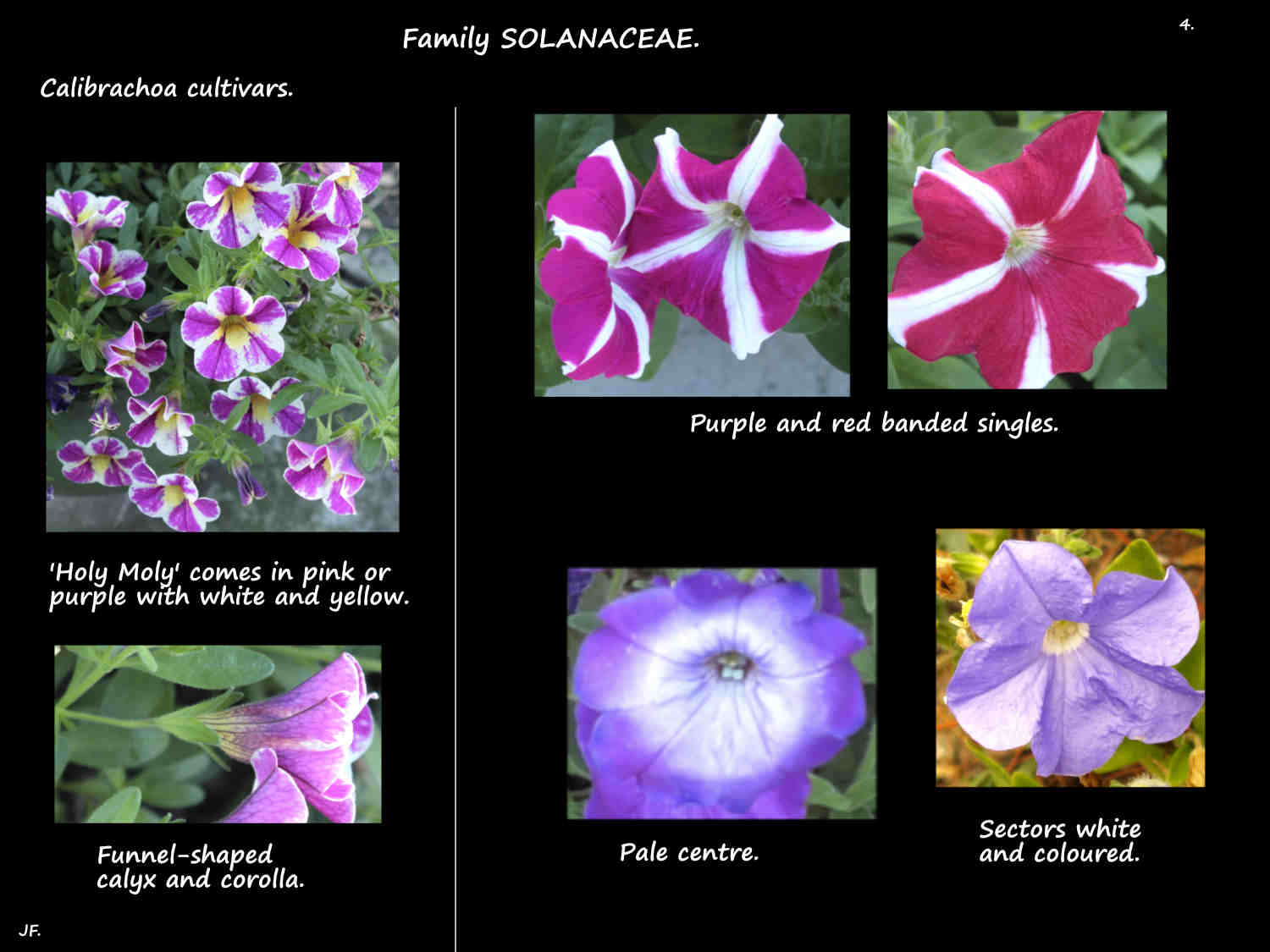Calibrachoa.
Caibrachoa or Petunia?
Calibrachoa. In the bud the petal lobes are folded lengthwise down the centre with the 2 halves facing each other (conduplicate).
Calibrachoas have 18 chromosomes and typically smaller leaves and flowers.
Petunia. In the bud the edges of the petal lobes overlap each other with one edge inside and the other outside adjacent lobes (imbricate).
Petunias have 14 chromosomes and larger leaves and flowers.
In Family Solanaceae Plants of the World Online (Kew) accepts 31 Calibrachoa species that are native mainly to South America.
They were previously (and still are by some) included in the Petunia genus.
Australia has 1 naturalised species Calibrachoa parviflora previously known as Petunia parviflora.
Calibrachoa parviflora.
It is widely used in the production of cultivars and occasionally as a garden plant.
They are annual herbs from 5 to 15 cm high.
The mainly prostrate or semi-erect stems root at the nodes forming mats.
Older stems are slightly woody and young ones have dense glandular hairs.
Leaves are alternately arranged in a spiral with the terminal ones opposite.
Lower leaves have a petiole 1.5 mm long, the upper leaves have none.
The lower spoon-shaped or oblanceolate blades are up to 10 mm long and 3 mm wide.
Some of the glandular hairs on them also have a swollen base.
Solitary flowers along the stems are on a pedicel up to nearly 1 cm long.
The leafy bract beside the pedicel base has glandular hairs with a swollen base.
The calyx tube, 2 mm long has 5 linear to spoon-shaped lobes around 5 or 6 mm long with a membrane between them.
The funnel-shaped corolla has a tube up to 9 mm long with 5 short lobes.
The tube is green and the throat and lobes are pale violet with darker veins.
There are glandular hairs on the outer surface.
The 5 stamen filaments, of different lengths insert near the base of the corolla tube and the dorsifixed anthers
open through longitudinal slits.
There is a 2-lobed yellow-green nectary at the base of the ovary.
The green ovary has 2 locules each with many ovules with axile placentation.
The roughly spherical green stigma has minute papillae.
The 3 mm style holds the stigma in the throat just above the anthers.
The ovoid capsules around 5 mm long have the green calyx lobes attached.
Capsules open at the tips of the 2 chambers.
The 0.3 mm seeds have a network of raised ridges on them.
Apart from their size (and petal folding in the bud) Calibrachoas are like small petunias.
Calibrachoa cultivars.
Commonly called Million Bells because of the profuse flowers or Trailing petunia due to their growth habit.
Plants are 15 to 30 cm high but when trailing the stems can be up to 75 cm long.
Leaves vary among the cultivars and can be ovate, obovate, elliptic or linear.
There are glandular hairs on both surfaces.
The single or double flowers come in a wide range of single, bi- or multi-colours including shades of pink, red, yellow, orange, cream, blue and purple as well as white.
Petals can be variously patterned with bands, spots and darker veins.
J.F.









